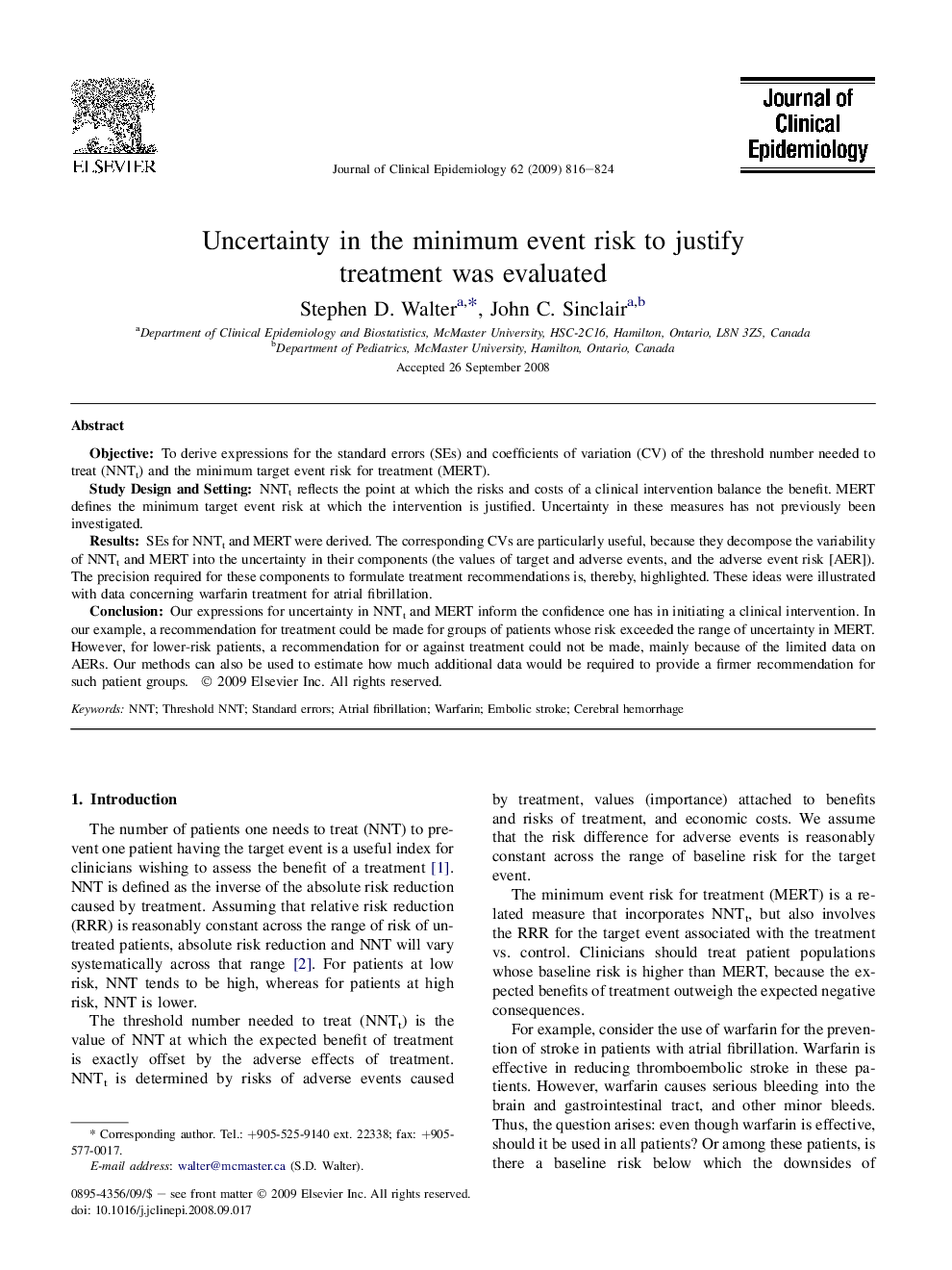| Article ID | Journal | Published Year | Pages | File Type |
|---|---|---|---|---|
| 1083477 | Journal of Clinical Epidemiology | 2009 | 9 Pages |
ObjectiveTo derive expressions for the standard errors (SEs) and coefficients of variation (CV) of the threshold number needed to treat (NNTt) and the minimum target event risk for treatment (MERT).Study Design and SettingNNTt reflects the point at which the risks and costs of a clinical intervention balance the benefit. MERT defines the minimum target event risk at which the intervention is justified. Uncertainty in these measures has not previously been investigated.ResultsSEs for NNTt and MERT were derived. The corresponding CVs are particularly useful, because they decompose the variability of NNTt and MERT into the uncertainty in their components (the values of target and adverse events, and the adverse event risk [AER]). The precision required for these components to formulate treatment recommendations is, thereby, highlighted. These ideas were illustrated with data concerning warfarin treatment for atrial fibrillation.ConclusionOur expressions for uncertainty in NNTt and MERT inform the confidence one has in initiating a clinical intervention. In our example, a recommendation for treatment could be made for groups of patients whose risk exceeded the range of uncertainty in MERT. However, for lower-risk patients, a recommendation for or against treatment could not be made, mainly because of the limited data on AERs. Our methods can also be used to estimate how much additional data would be required to provide a firmer recommendation for such patient groups.
